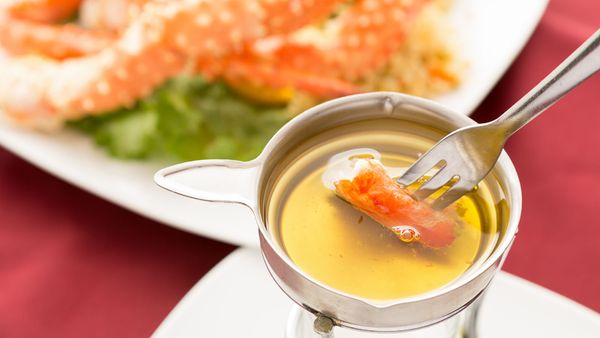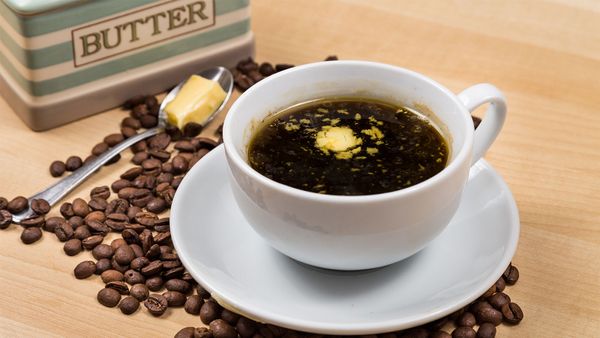
Charcuterie boards have you bored? Then it's time to check out the next delectable trend taking both kitchens and social media by storm: butter boards.
Advertisement
What is a butter board?
Butter boards are a beautifully uncomplicated way to present and serve a delicious spread of sweet or savory treats. And they are about as simple to make as they sound. Simply soften some actual butter (please, no margarine or fake butters here) and then spread it onto a wooden cutting board or marble cheese tray, using a butter knife to make generous swirls. Top the butter with sweet or savory accompaniments (or both), such as honey, lemon zest, figs, tomatoes, fresh basil, chile flakes, thinly sliced radishes, edible flowers — and a generous sprinkle of sea salt and fresh cracked pepper. Really, almost any savory or sweet topping will do, as long as it is served with (preferably warm) artisan bread.
Although butter boards quickly became a phenomenon after starring in a viral TikTok video by Justine Doiron, a recipe developer who shares her creations on her @justine_snacks TikTok account, she credits cookbook author Joshua McFadden with creating the star of the show. McFadden is the author of the James Beard Award-winning book "Six Seasons: A New Way With Vegetables," which he wrote with Martha Holmberg.
Because of their gorgeous presentation, butter boards double as a centerpiece for gatherings, attracting not only the eye but the palate. Whether savory or sweet, the idea is to leave large swirls in the softened butter as one might with cake frosting. This unevenness is not only decorative, but allows pockets of flavor to develop. A bit more sea salt might fall into one area, while another may have a pool of honey. The idea is not for the butter board to be uniform in terms of look or taste, but to present an experience that will become as unique as each person who draws from it.
Advertisement
The History of Grazing Boards
The idea for grazing boards isn't new. We may live in the charcuterie era, but we can't lay claim to the discovery. Ever since World War II, when immigrant grocers became America's new specialty stores, we've collectively flocked to prepared foods that can simply be assembled at home. During the 1960s, America's palate continued to expand with the rise of overseas travel and a hunger to keep eating European cheeses and olives once we returned home. Coupled with the rise of Julia Child's public television show, "The French Chef," in the mid-1960s, and the advent of overnight shipping by FedEx in the 1970s, America became a culture deeply determined to delight its tastebuds. By the 1980s, delis were preparing boards with prosciutto and honey, cheeses and figs, and throughout the 1990s and 2000s, these grazing boards appeared everywhere and on nearly every occasion, from a wedding shower taking place in someone's home to a corporate black-tie affair.
Another reason to like butter boards? They're less expensive than charcuterie boards, which can become pricey once the cost of meats and cheeses are added up. And, they are nearly endless in their topping options, with variations ranging from sweet citrus and honey to savory bacon and tomato.
While any natural butter will do as the basis of a butter board, like any dish, it can be elevated with quality ingredients. Consider a high-fat Irish or French butter, both of which can typically be purchased at local specialty markets, or even ordered online.
For those concerned about the risks of a communal butter board in the post-Covid era, Doiron was quick to clap back to detractors who showed up in the comment section of her viral TikTok video, as reported by People. "I was not expecting this to blow up but YOU CAN USE A KNIFE JUST LIKE A CHEESEBOARD CALM YOURSELVES Ok ily 🥺," she wrote.
Advertisement


